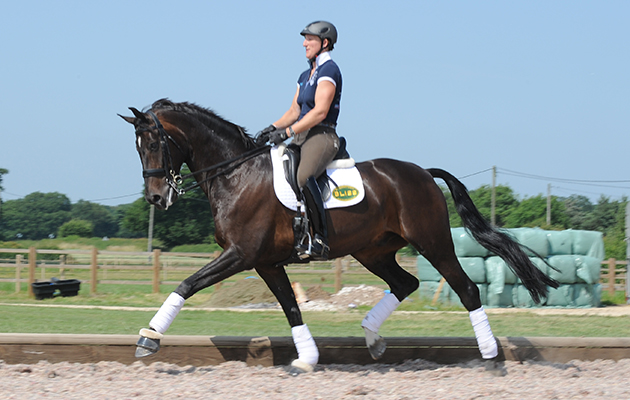The standard of dressage in eventing is improving championship on championship, with horses looking more balanced and more expressive.
For me, William Fox-Pitt did the winning test. His flying changes were the absolute highlight — the
best of the competition — and Chilli Morning looked fantastic.
Ingrid Klimke’s horse Hale Bob was the best produced and trained. The harmony and flow she showed was a testament to her training. There were no mistakes, and it was just beautiful to watch.
The two most eye-catching, sparkling performances were that of Alex Hua Tian and Don Geniro, who is a stunning mover and very elegant, and Chris Burton on Santano II; it was a shame that Santano’s walk didn’t quite match the canter or trot, but the horse’s potential is fantastic.
Sam FBW looked as relaxed as I have seen him — certainly more relaxed than he was four years ago in London — and Michael Jung was able to have him that bit more forward and flowing as a result. It was just a shame that he lost the counter-canter.
The French as a team rode very consistently, and it was lovely to see Jonty Evans ride such a good test for Ireland on Cooley Rorkes Drift.
An equal footing
I think being able to ride the dressage on a surface ensures the footing is the same for everyone, making a fairer competition. It also encourages the horses to be more confident, creating a more balanced picture, which could be clearly seen in the tests produced in Rio.
It was interesting that a few horses looked nervous in the Olympic arena. Several riders made the mistake of cantering in the first medium trot by being too brave when they didn’t quite have the relaxation and connection at the start of the test. Bearing in mind that this is a team competition,
I think this was a little risky.
Horses that weren’t connected from the rider’s leg to the end of the rein were the ones that got more nervous and tense in the atmosphere.
If trying to produce more expression and movement in horses is to the detriment of the connection, then the picture is spoilt. When horses are so fit and ready to run across country, the support of the connection is crucial to their relaxation in the arena, which is what Ingrid Klimke and William Fox-Pitt showed throughout their tests.
It is so important for horses — and especially event horses – to feel secure between the leg and the contact in a supple way. It means a rider can help and improve them by putting the leg on — if they can’t, because the horse doesn’t quite accept the leg, that’s when tension creeps in. The leg is a way of being able to hold the horse’s hand in the arena.
That’s why what Ingrid produced from Hale Bob showed that you don’t need to be flash or fancy; with a nice rhythm, outline and suppleness, you can get a top mark on a horse who isn’t the best mover.
Ref Horse & Hound; 11 August 2016

